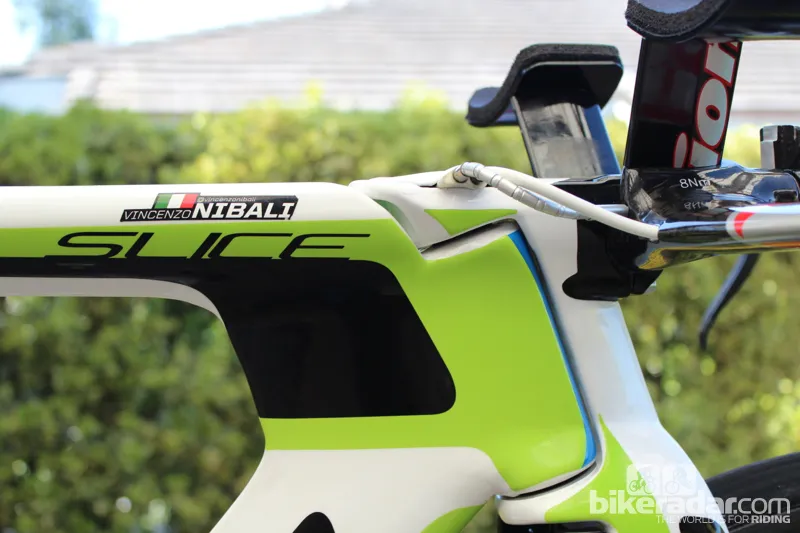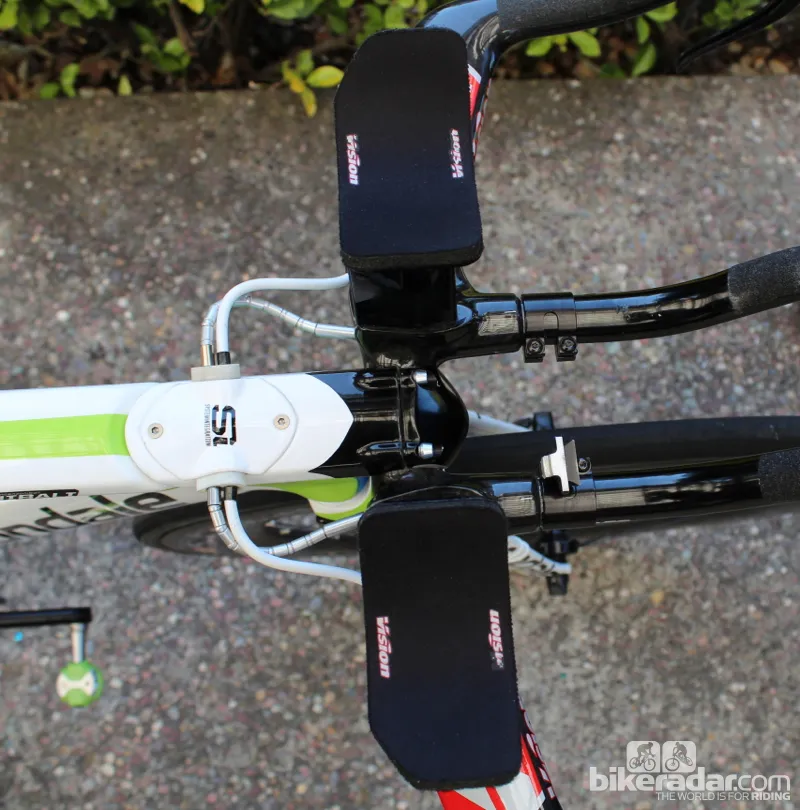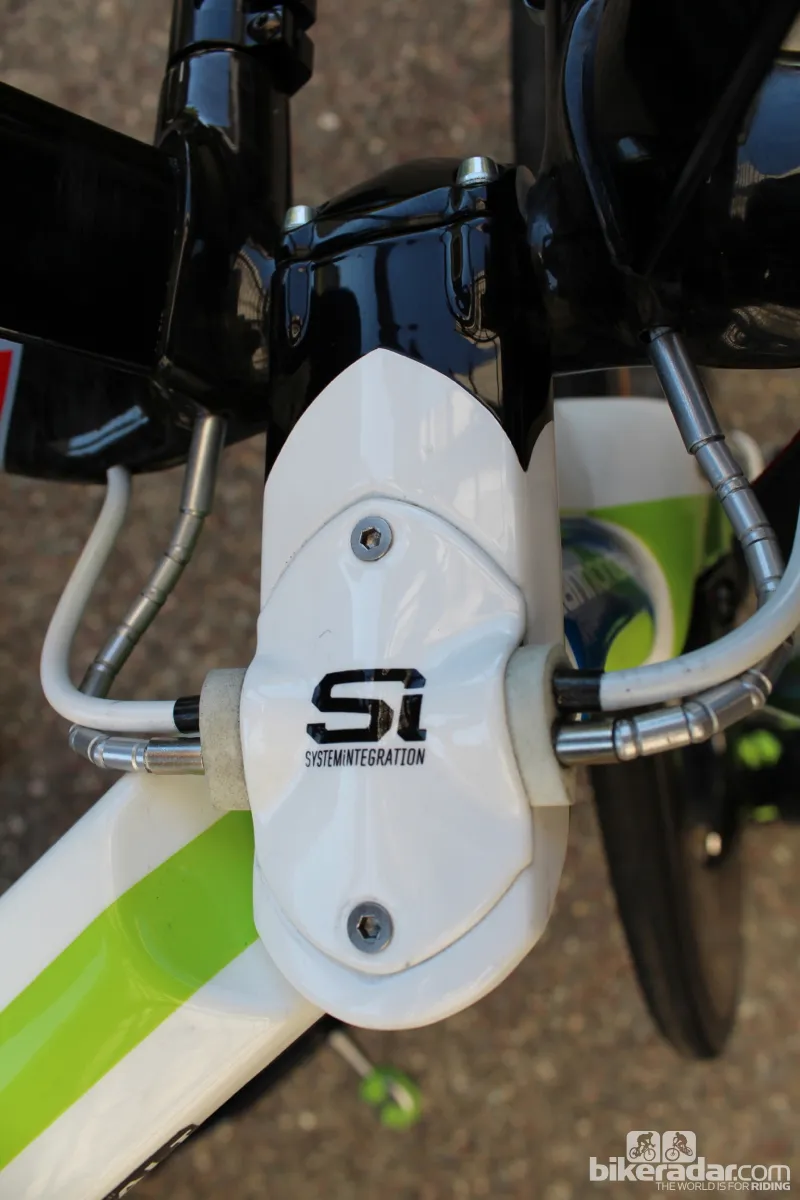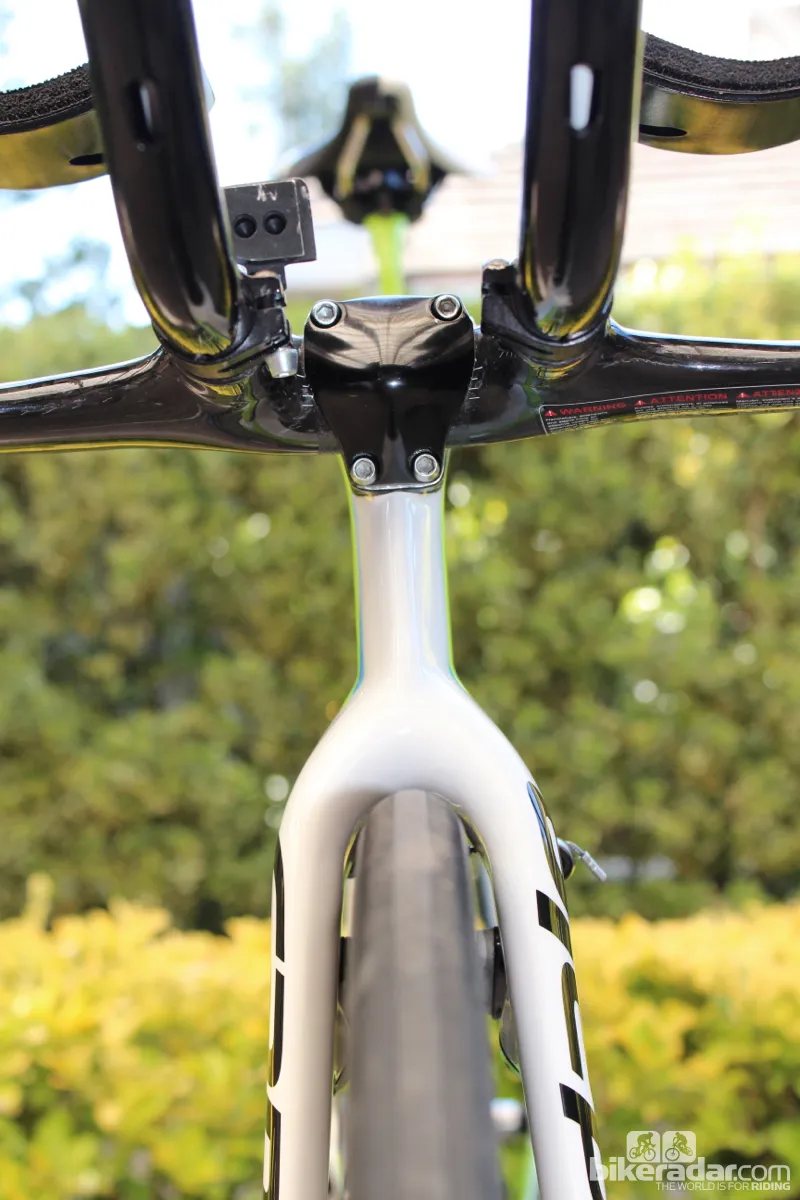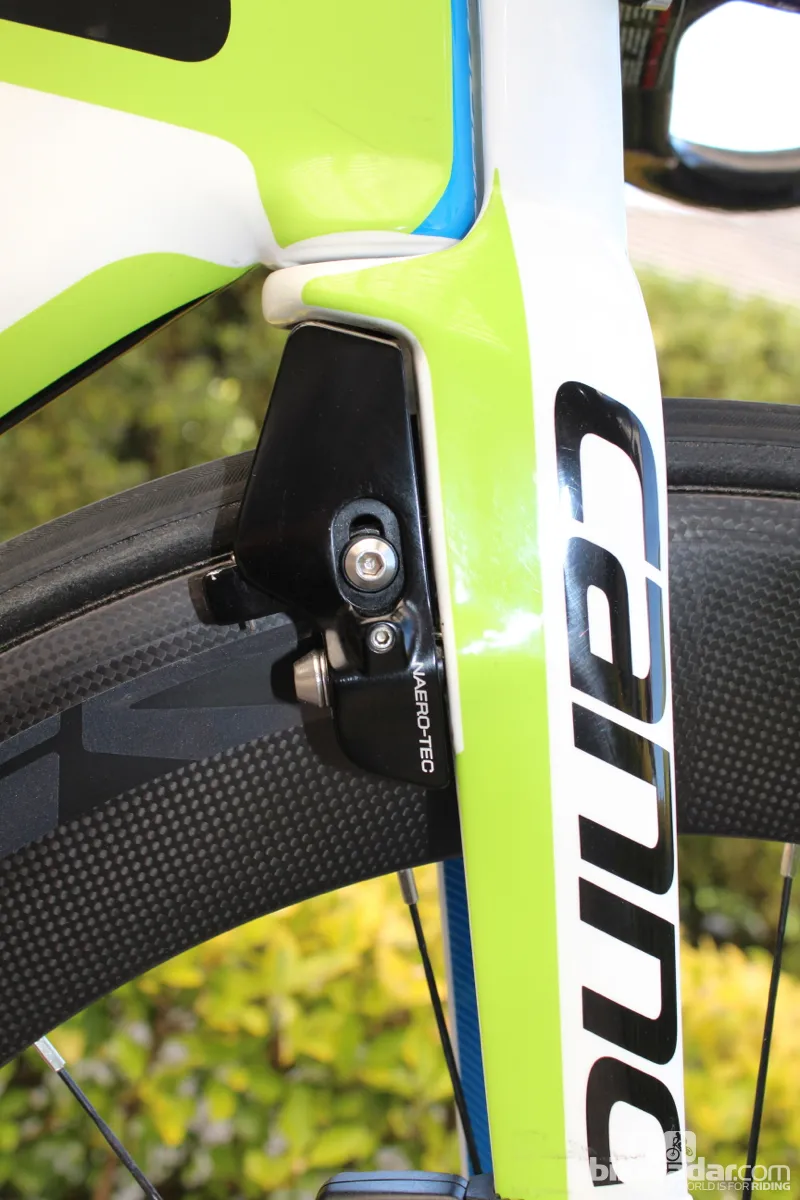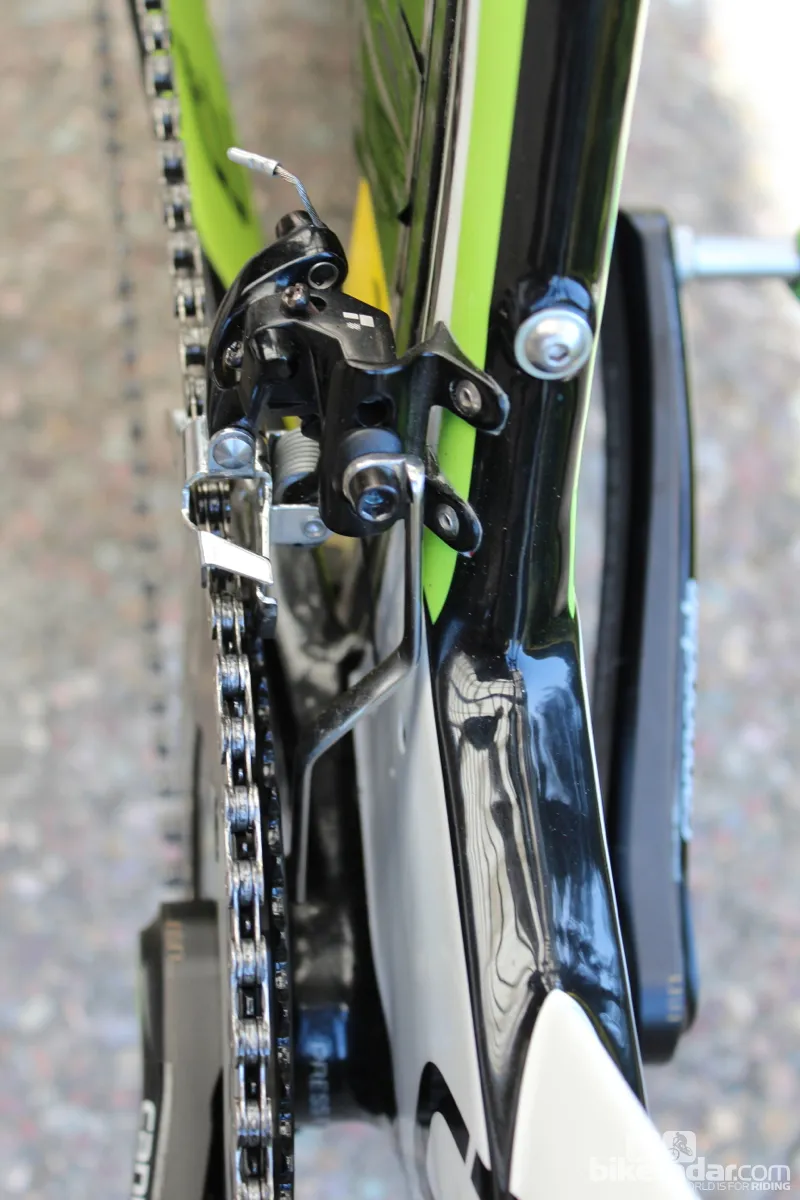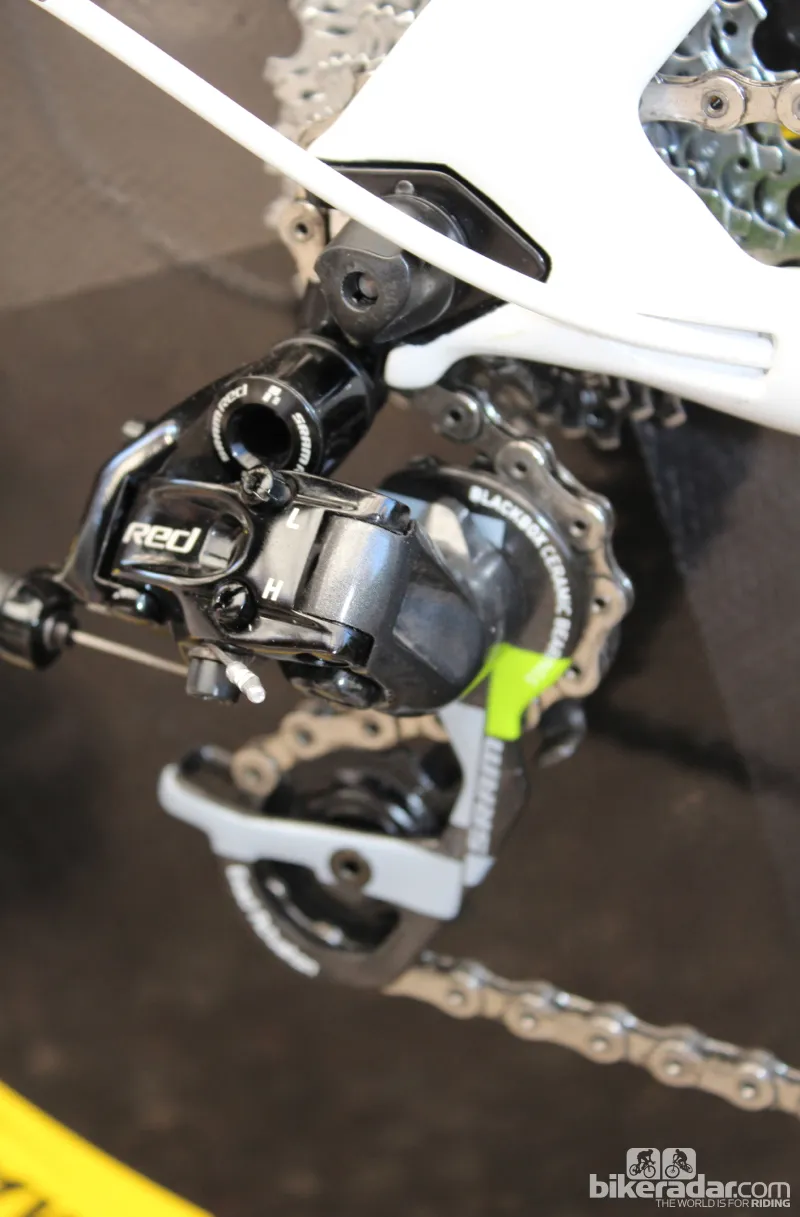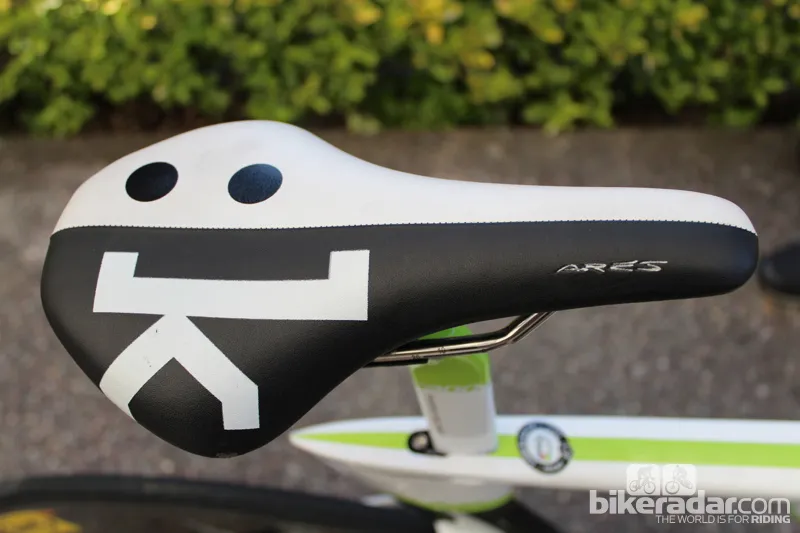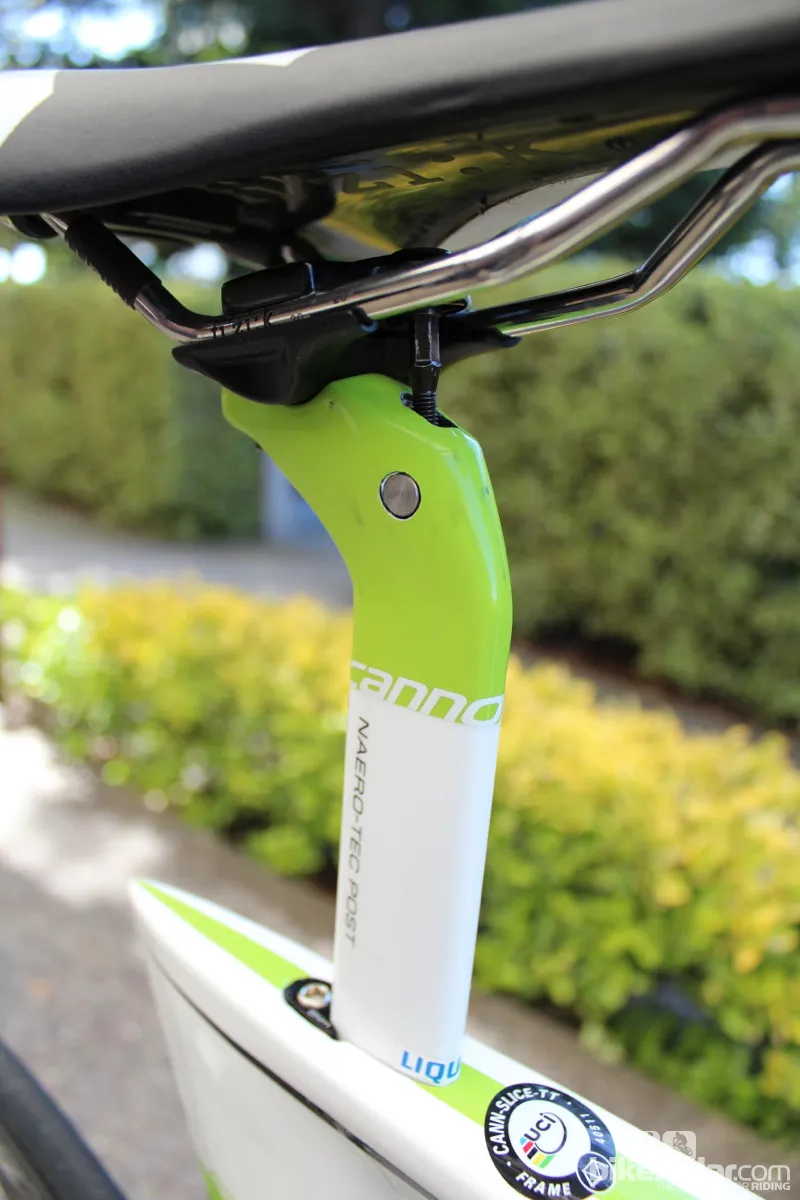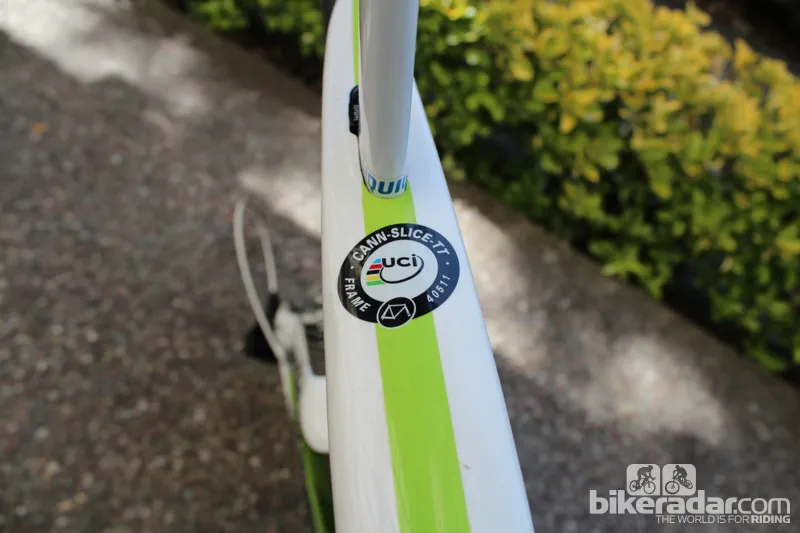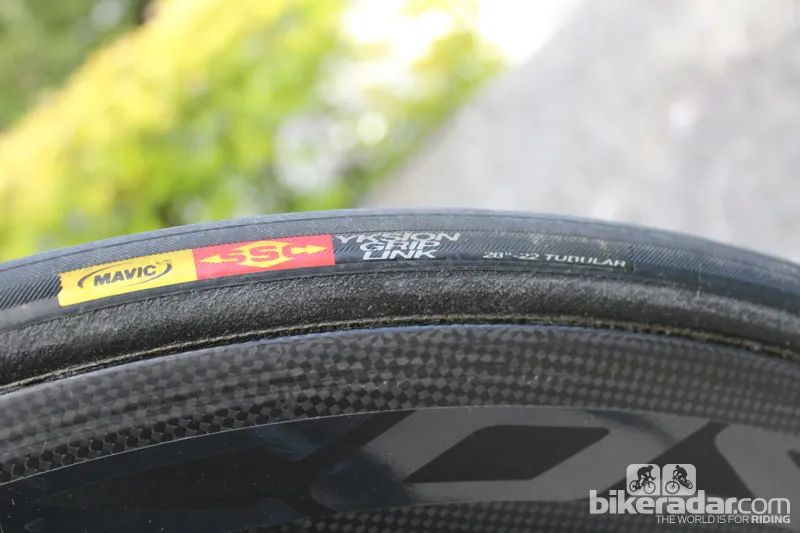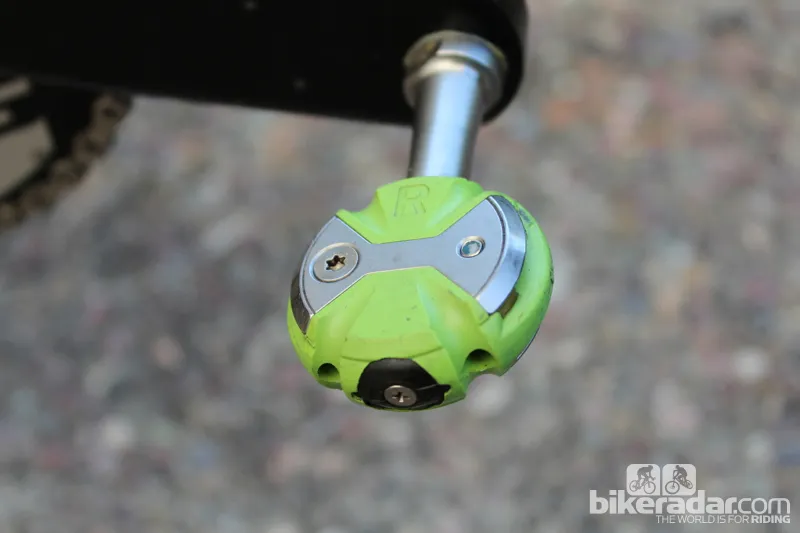Liquigas-Cannondale's Vincenzo Nibali won the 2010 Vuelta a España and placed third in this year's Tour de France, thanks in no small part to his ability against the clock. Last year Cannondale put Nibali on a prototype Slice RS; for this season, Nibali and the rest of his squad have stock 2013 Slice RS machines for efforts against the clock.
The new-for-2013 Slice RS get a complete overhaul from the currently available 2012 Slice. Departing from a standard fork, head tube and stem configuration to a sleek integrated front end, the bike also features proprietary horizontal-pull brakes that are tucked behind the fork and under the seat stays.
Cannondale’s 2012 Slice models — Carbon 4 Force and Carbon 5 105 — come with traditional road calipers mounted on the front of the fork and on the seat-stay bridge.
Nibali first rode a prototype of the Slice RS at the final Giro d'Italia time trial in Milan last year. BikeRadar's technical editor James Huang spotted his teammate Basso on the Slice RS at last year's USA Pro Challenge.
There are a few notable modifications to Nibali's bike. The first is the component group. Instead of the new SRAM 2012 Red, Nibali has an older SRAM Red group, plus a SRAM Force front derailleur marked SRAM Red. Although SRAM later added a steel cage to its Red group (and then substantially beefed up the cage for the 2012 edition), the original Red front derailleur featured a titanium cage, which some riders found too flexy. So, some teams opted to run a Force cage branded Red.

The hidden Naero-Tec brake
Now, the 2012 Red front derailleur is not officially compatible with non-SRAM cranks, so some teams that use non-SRAM cranks are choosing to keep older Red on the bikes for flexibility. Nibali has a 54-tooth SRAM ring on his bike here, but SRAM says Cannondale's normal rings are not compatible with 2012 Red.
"The reason is we haven’t had the chain rings to go with Cannondale’s proprietary crank," said SRAM's Michael Zellmann. "The same thing applies for some Specialized bikes with Specialized cranks. A lot of the bikes have the original SRAM Black Red."

Behind the scenes: note the SRAM Force derailleur marked Red, and the Naero-Tec brake tucked under the seat stay
Another modification is the use of grip tape on the aero bars, on the tops of the extensions and on the tops of the horns. This allows for grip without any drag (or cushioning).
Another UCI rule — one that defines the bike's length — comes in to play with how Nibali sets up his shifters. Using SRAM return-to-center shifters, Nibali sets the neutral position pointed down, to save a few centimeters off the measured length of the bike.

SRAM's RTC shifters set down, plus grip tape on the extensions
For wheels, Liquigas-Cannondale slides a Mavic Comete disc into the bike's horizontal dropouts, and puts a Cosmic Carbone 80 up front. Interestingly, the new Mavic CXR 80 carbon wheel is more aero than the Cosmic Carbone 80, according to Mavic.
"The rim profile, tire, and CX 01 blade give CXR 80 much better aerodynamics, especially at a higher yaw (crosswind)," said Zack Vestal, Mavic USA's communications manager. "Even with the blade removed, the CXR is still faster. The CXR wheels are also lighter by about 150g. The original CC 80 are probably in service here and there due to durability, narrower profile (brake compatibility), and the basic limitations of team supply (getting enough wheels out to teams with the right timing)."
Complete bike specification:
- Frame: Cannondale Slice RS, 56cm
- Fork: Cannondale Slice RS
- Stem: Cannondale System Integration
- Handlebar: Vision TriMax Carbon Si CSI, 41cm
- Front brake: Cannondale Naero-Tec
- Rear brake: Cannondale Naero-Tec
- Brake levers: SRAM 900 TT
- Front derailleur: SRAM Force/Red
- Rear derailleur: SRAM Red
- Shifters: SRAM RTC Aero Shifters
- Cassette: SRAM 1090, 11-23
- Chain: SRAM Red
- Chain rings: SRAM Red Black TT 54/42
- Crankset: Cannondale Hollowgram SL, 172.5mm
- Power Meter: SRM
- Computer: Power Control 7 (not shown)
- Bottom bracket: Custom machined steel
- Pedals: Speedplay Zero with custom colors
- Wheelset: Mavic Comete disc with Cosmic Carbone 80 front
- Front tire: Mavic Yksion GripLink, 23mm
- Rear tire: Mavic Yksion PowerLink, 23mm
- Saddle: Fi;zi:k Ares

